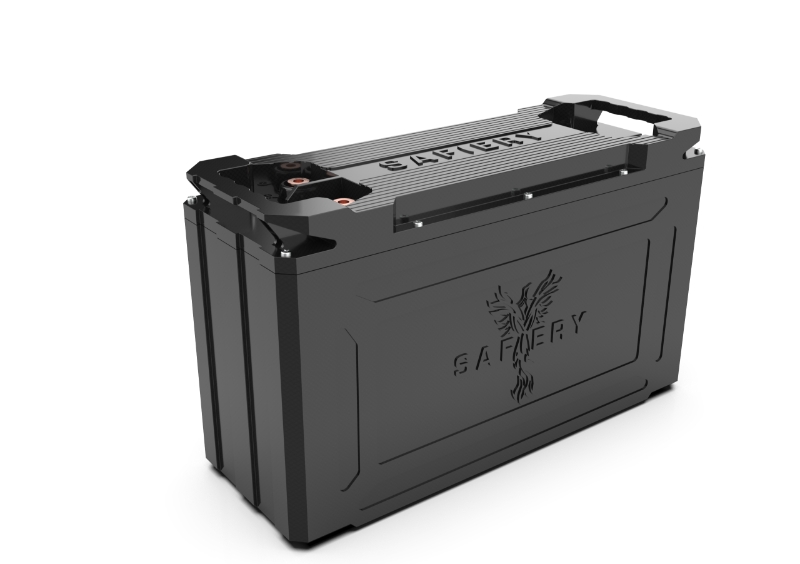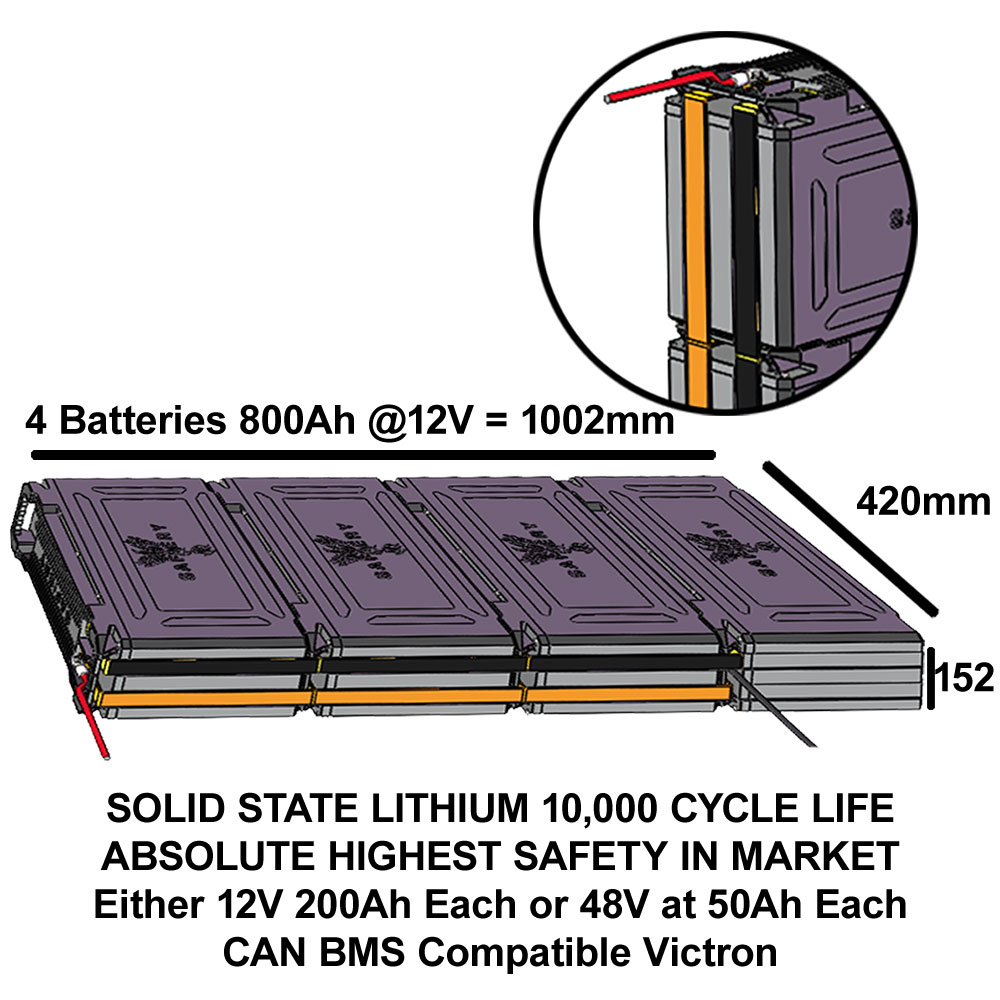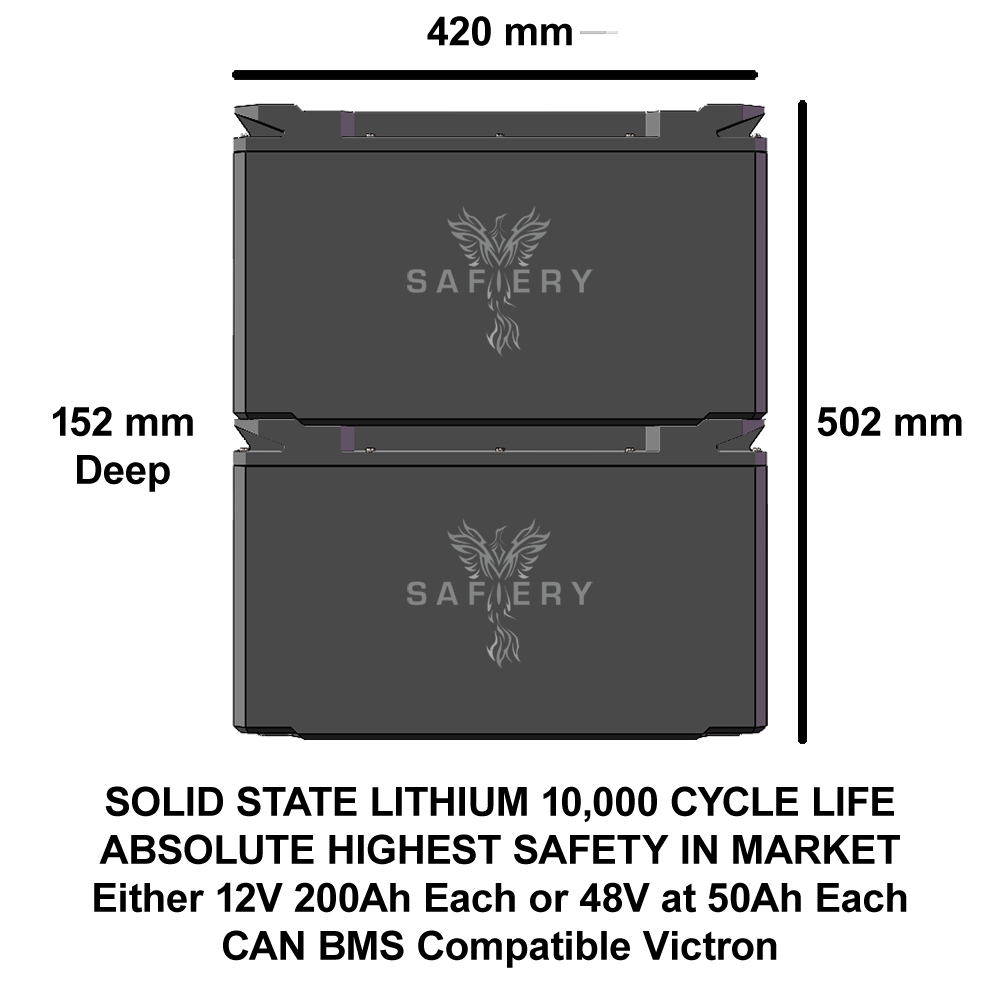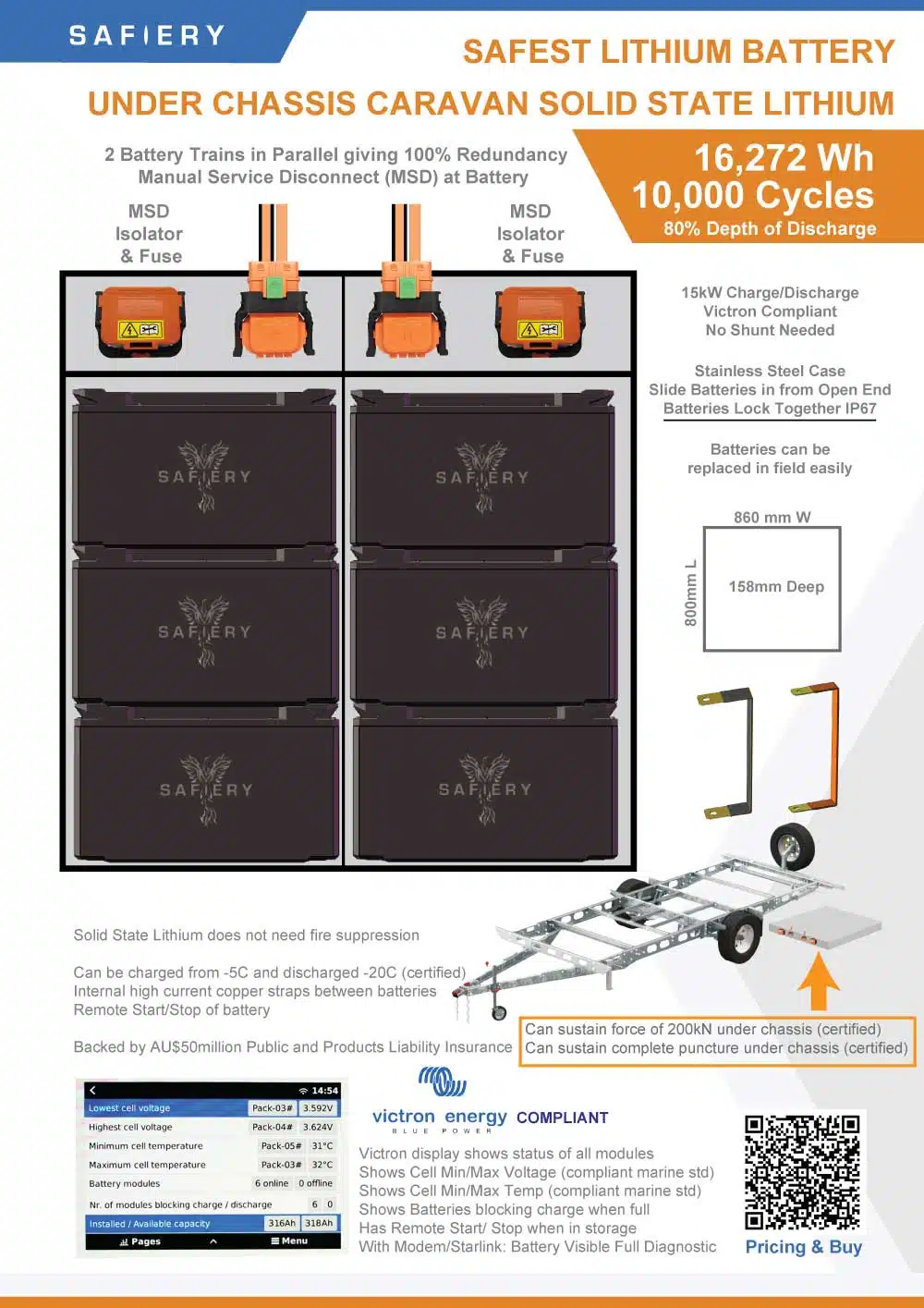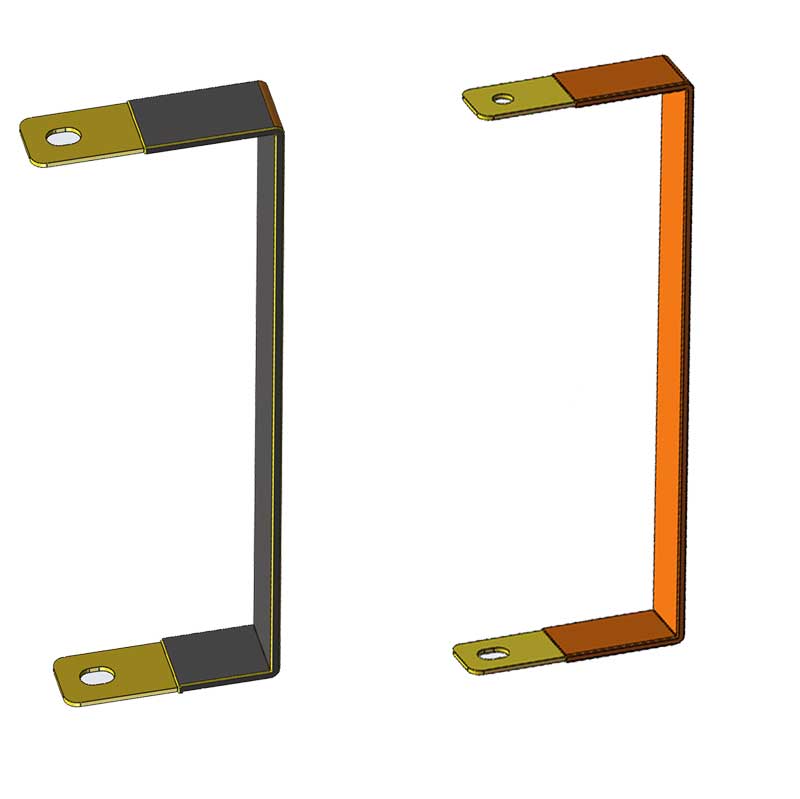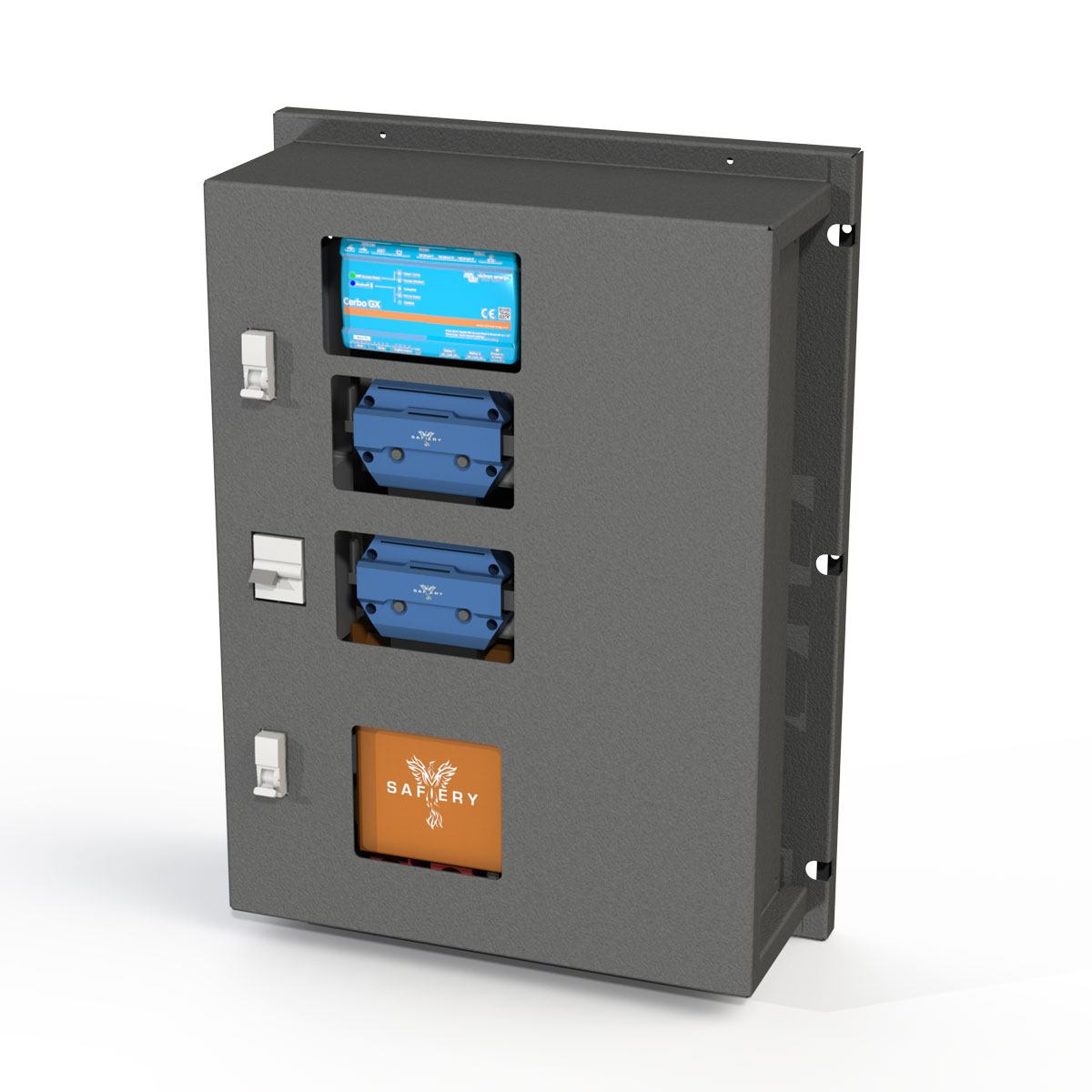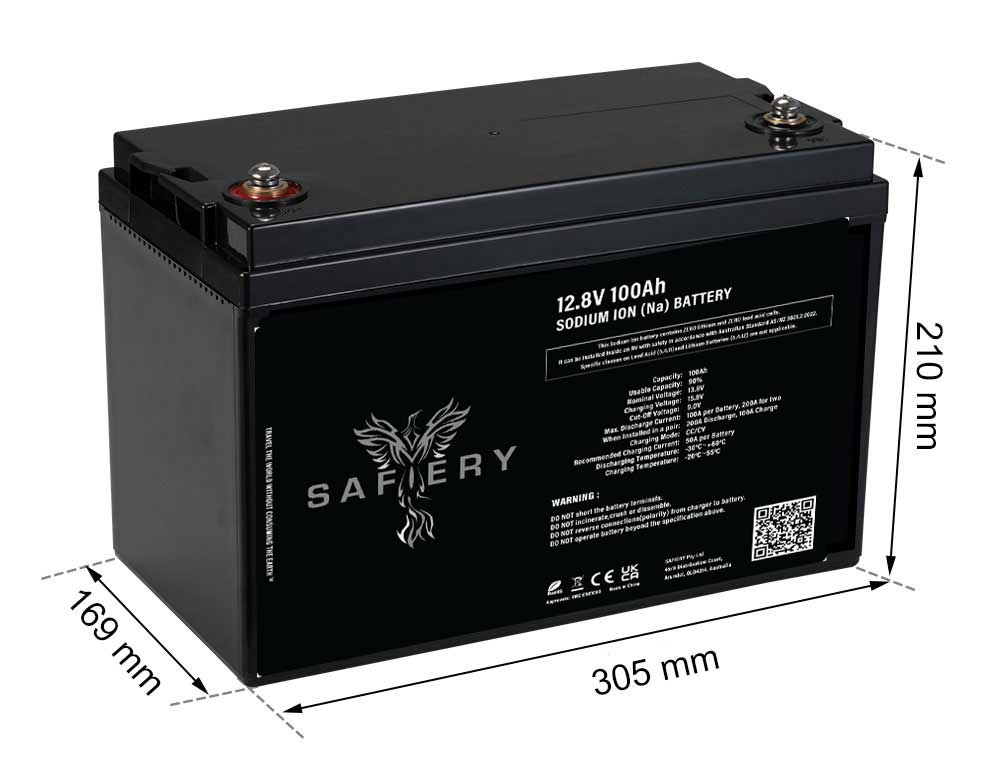Safiery Solid State Lithium 12V 217Ah 2,777Wh
AUD2,259.60
Note: The price added to the cart is exclusive of GST.


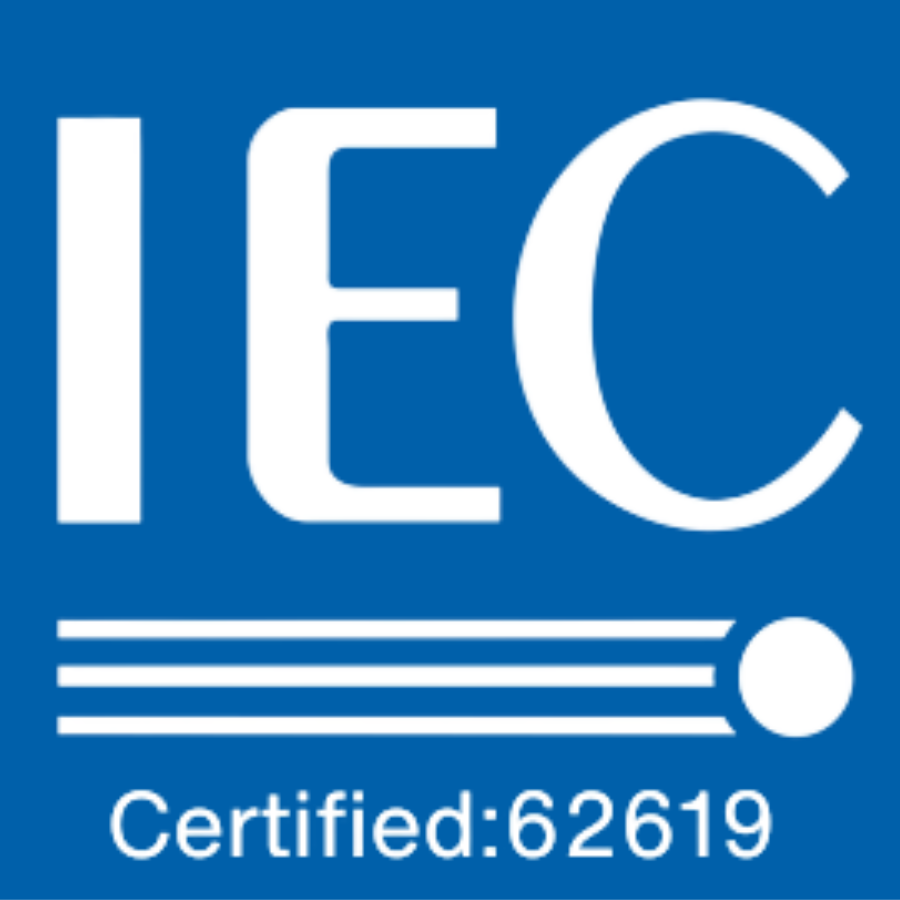

5 Reasons to Choose:
- Safest Lithium Available.
Safety tests include: driving a nail through a cell; compressing to 200kn; overcharging at 2x voltage; applying a dead short for 1 hour. Insurers welcome this battery and the technology shift to safety. - 10,000 Cycles.
At 80% Depth of Discharge per cycle. This is double a traditional prismatic or cylindrical lithium battery. - Compact, hard wearing solid battery with internal metal frame:
Designed to be placed on top of each other or hard up beside each other required a tough internal frame. The outer case is UV treated ABS. - Stackable Locking Design:
The battery's ABS case and handle are designed in such a way that they lock together minimising the securing mechanism. - Inter-Connecting Straps conceal in side of battery case:
Gives a clean and simple layout. Straps made of high grade copper flexible material, tin finished.
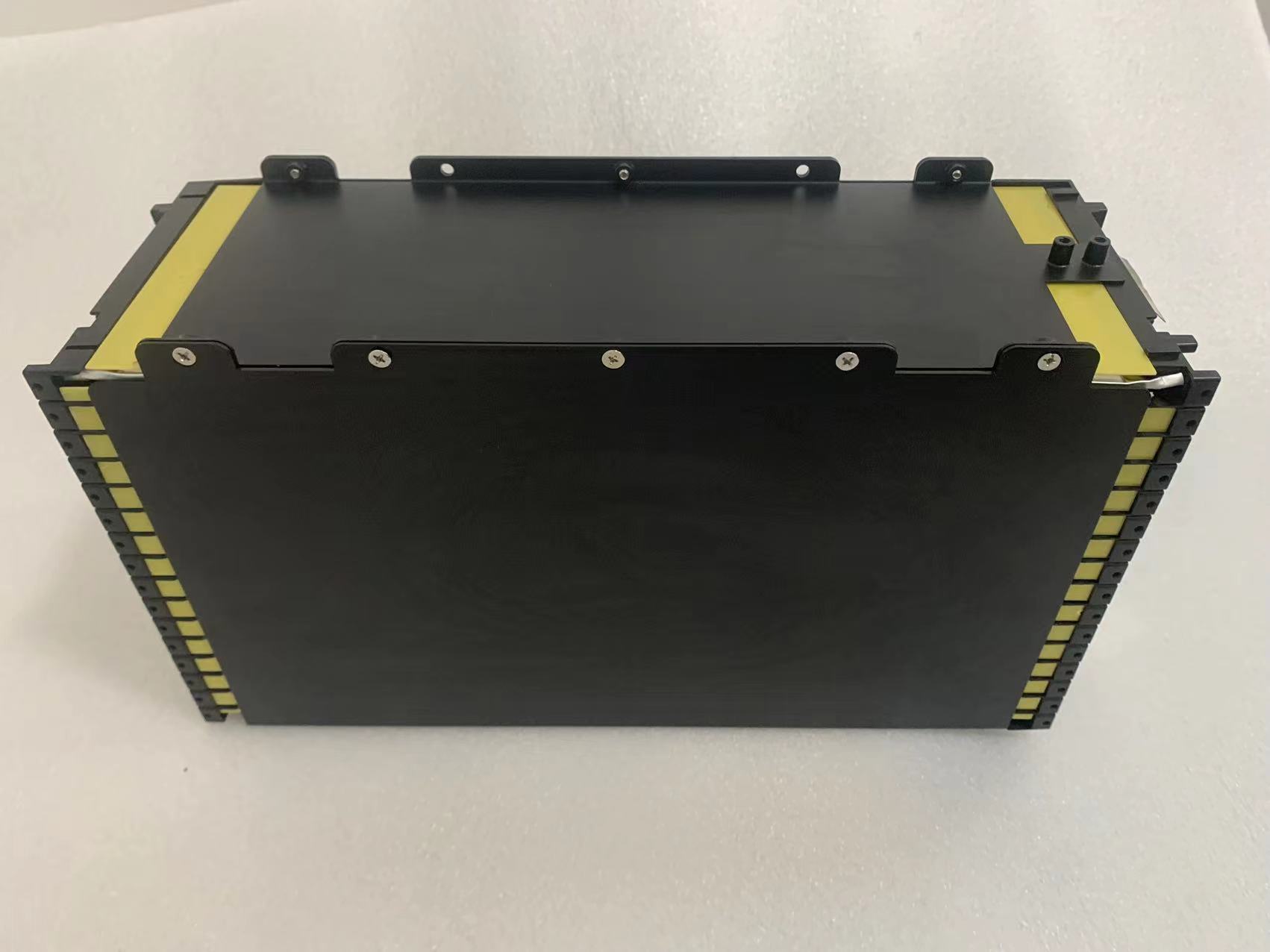
Photo shows solid state wafers stacked vertically inside a strong metal carry frame.
BMS Mounts in cavity on top.
| Nominal Voltage | 12V |
| Nominal Capacity | 200Ah |
| Parallel Connections | 32 units |
| BMS | CAN Victron Compatible |
| Circuit Protection | Over charge, over discharge, over current, over temp, Short Circuit, Cell Imbalance. |
| Cycle Life | 10,000 Cycles at 80% DOD |
| Self Discharge | Less than 2.5% per month |
| Charge Efficiency | 100% at 0.2C |
| Charge Voltage | 14.4V +/- 0.8V wide Band acceptance |
| Charge Current | 200A |
| Discharge Current | 200A, 250A Peak 2 secs |
| Cut Off Voltage | 10V |
| Internal Resistance | Less than 1 mOhm |
| Operation Temperature | Discharge -20 to 55C
Charging 0 to 55C |
| Capacity Retention Rate | After 28 days, 96% Capacity for discharge at 1C |
| The traditional liquid lithium battery is called a 'rocking chair battery' by the scientific community because of its charging and discharging principle. The two ends of the rocking chair are the positive and negative poles of the battery, and the middle is the liquid electrolyte. Lithium electrons move back and forth across the two ends of the rocking chair and complete the charge / discharge of the battery during the process. |
| There are many safety hazards in this process because of the liquid electrolyte. Overcharging the battery creates heat, causing the electrolyte to swell, decompose, spontaneously ignite or even explode. |
| The charging and discharging principle of a solid-state battery is the same as that of a liquid battery. The only difference is that its electrolyte is solid, which has the following advantages over liquid electrolytes: |
| 1) Higher Safety: |
| The liquid electrolyte in traditional batteries creates safety hazards if over charging or electrical abuse. The result is thermal runaway and fire. Solid-state batteries have higher safety without this electroyte mass. |
| 2) Higher Cycle Life: |
| Because solid-state batteries use solid electrolytes, the cycle life is doubled. A minimum of 10,000 cycles at 80% depth of discharge is expected. |
| 3) High energy density: |
| As solid-state batteries use solid electrolytes, they do not need to use lithium-intercalated graphite anodes, but directly use metal lithium as the anode, which can reduce the amount of anode materials and increase the energy density of the entire battery. |
| 4) Smaller size: |
| The separator and electrolyte in the traditional liquid lithium battery account for nearly 25% of the entire battery mass. With the solid electrolyte, the distance between the positive and negative electrodes can be shortened to ten micrometers. The result is smaller battery dimensions and better quality control. |
| 5) Lower temperature Range: |
| Solid State Lithium is less affected by freezing temperatures because of the solid layers. |
| 6) High Discharge rate:Solid State Batteries can discharge up to 10C. However, the BMS current rating limits discharge rates |
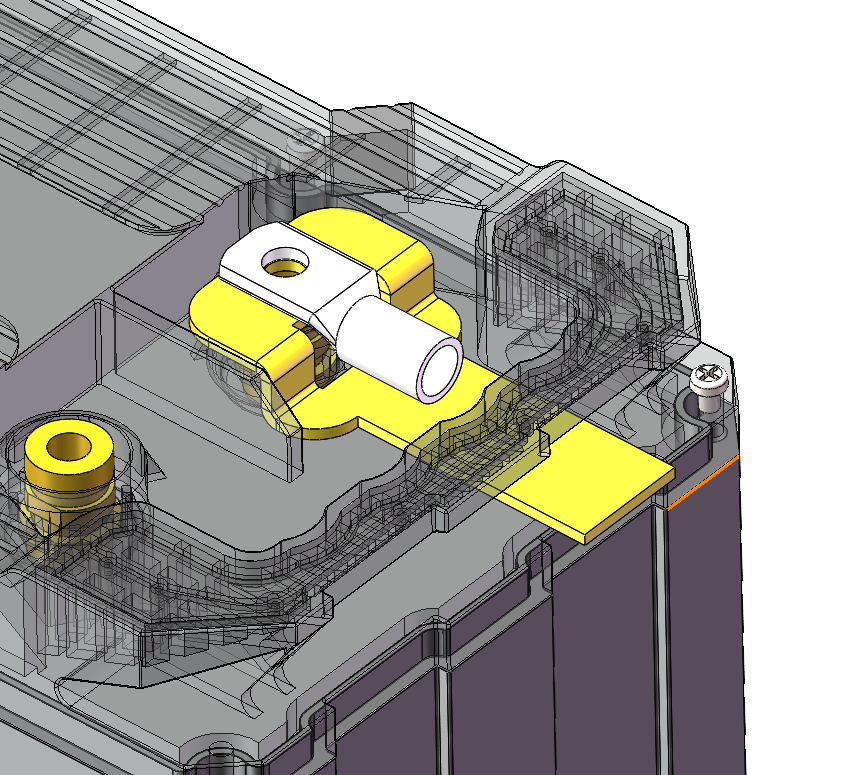
Safiery's Patented Design has the positive and negative connecting straps concealed into the sides of the case. This means a clean and simple connecting system between multiple stacks of the lithium battery.
| Battery System | SKU required | SKU required |
| 1x Stand-alone Battery | N/A | N/A |
| 2x Batteries in system | 1x strap-Solid-State-Short | N/A |
| 3x Batteries in system | 1x strap-Solid-State-Short | 1x strap-Solid-State-long |
| 4x Batteries in system | 1x strap-Solid-State-Short | 2x strap-Solid-State-long |
STRAP-SOLID-STATE-SHORT - is shown in below photo.
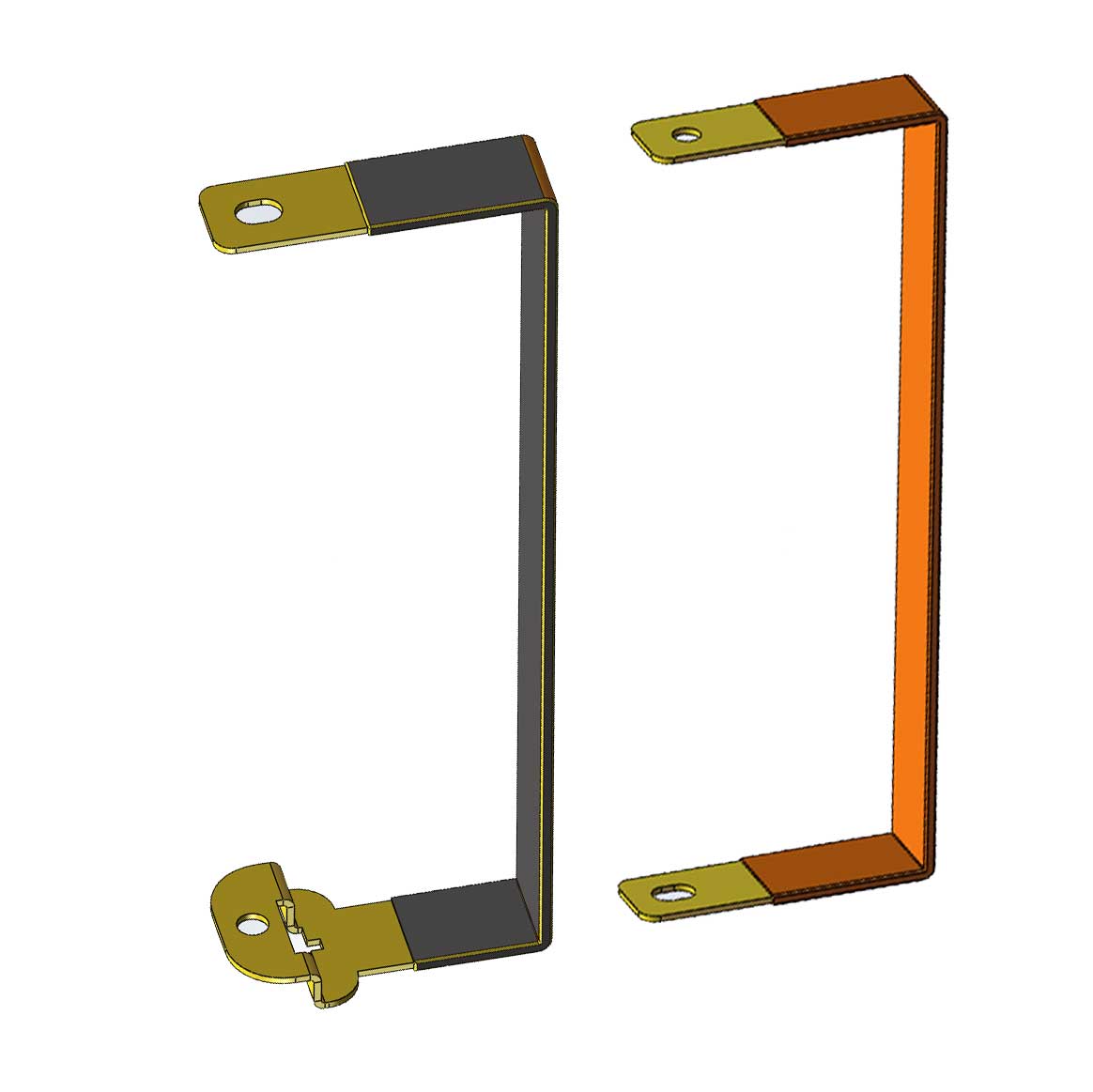
A special Strap is used for the negative bottom battery to give adequate clearance for a connecting lug.
lorem ipsum
Lorem ipsum dolor sit amet, consectetur adipiscing elit. Ut elit tellus, luctus nec ullamcorper mattis, pulvinar dapibus leo. Lorem ipsum dolor sit amet, consectetur adipiscing elit. Ut elit tellus, luctus nec ullamcorper mattis, pulvinar dapibus leo.
lorem ipsum
Lorem ipsum dolor sit amet, consectetur adipiscing elit. Ut elit tellus, luctus nec ullamcorper mattis, pulvinar dapibus leo. Lorem ipsum dolor sit amet, consectetur adipiscing elit. Ut elit tellus, luctus nec ullamcorper mattis, pulvinar dapibus leo.
lorem ipsum
Lorem ipsum dolor sit amet, consectetur adipiscing elit. Ut elit tellus, luctus nec ullamcorper mattis, pulvinar dapibus leo. Lorem ipsum dolor sit amet, consectetur adipiscing elit. Ut elit tellus, luctus nec ullamcorper mattis, pulvinar dapibus leo.




